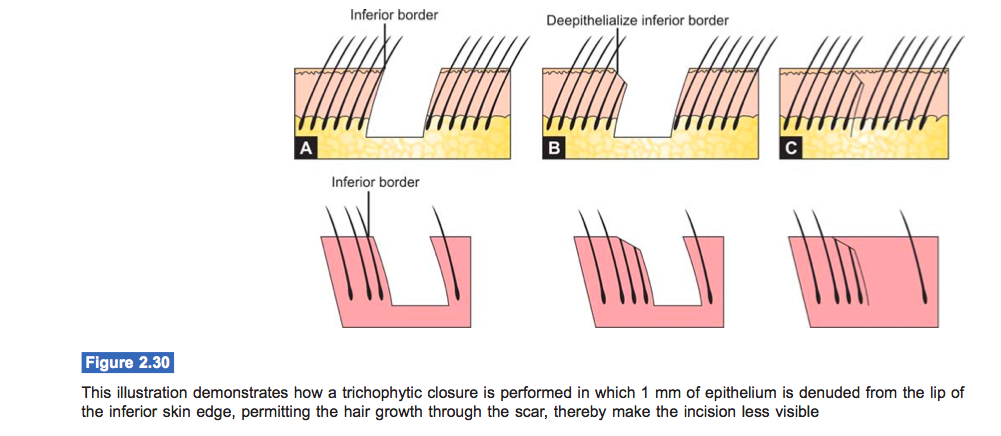Understanding the Role of the Trichophytic Closure in Hair Transplants
The donor area where hair is taken should be treated with the same degree of meticulous respect as the transplanted area. A good donor closure begins with excellent donor harvesting: when the hairs are cleanly removed without notable transection of the hair shafts, the nerve and blood supply are preserved, and the wound is clean then a good donor closure is possible. All of this begins with adequate tumescence or fluid in the donor area before harvesting is commenced to permit a clean harvest of the hair follicles. However, when it comes to donor closure, the trichophytic closure has become the workhorse for me to create seamless and near scarless incisions that can be hard to detect even close up. This article will explore the nature of a trichophytic closure and also who is and who is not a candidate for this type of donor closure.
The term “trichophytic” means hair growing, as that is what occurs, i.e., hair is allowed to grow through the scar to make the scar difficult if not near impossible to detect. A small 1 mm lip of skin is removed from the bottom edge of the incision with the top ledge closed over this denuded area (as seen in the accompanying Figure). The hairs from the bottom, denuded edge then are forced to grow through the top ledge so that the scar becomes almost invisible. Further when hairs growth through the scar, it irregularizes the appearance of the scar making your eye have a hard time seeing even with close inspection the linearity to a scar.

Figure reprinted with permission from Hair Transplant 360, Volume 1 (Jaypee Brothers Medical Publishers, 2011), Samuel M. Lam MD
Does this always work? No, sometimes despite my best efforts I see a small degree of scar but typically no more than a millimeter, which would only be visible if someone were close up to the incision combing through and knowing to look for a scar. Nevertheless, a trichophytic closure allows the best chance at an excellent, invisible incision line.
The best candidate for this procedure is someone who has not had multiple hair transplant procedures. I typically do a trichophytic closure in someone who has minimal scalp laxity and who has had fewer than 3 previous hair transplant procedures. Since an additional one millimeter of tension must be added to have the upper edge close over the bottom edge you do not want to perform this procedure in an individual’s scalp that is showing signs of tension, e.g., someone who has had multiple previous procedures performed. By doing a trichophytic closure in the first couple of procedures, I can proceed to take fresh tissue out without having to go back to remove my scar because I cannot find it in many cases to begin with.
As in all things, the trichophytic closure should not be viewed as a marketing gimmick but as a reliable method in most cases to achieve excellent donor closures in the right surgeon’s hands. More importantly as the beginning of this article suggests, good wound closure begins with careful donor harvesting and ends with just as careful donor closure with or without a trichophytic component.
To learn more about Dr Lams hair transplant procedures, please view the following pages: hair transplant technique, hair transplant videos, hair transplant before and after photos, or call 972-312-8105 to schedule a consultation.




